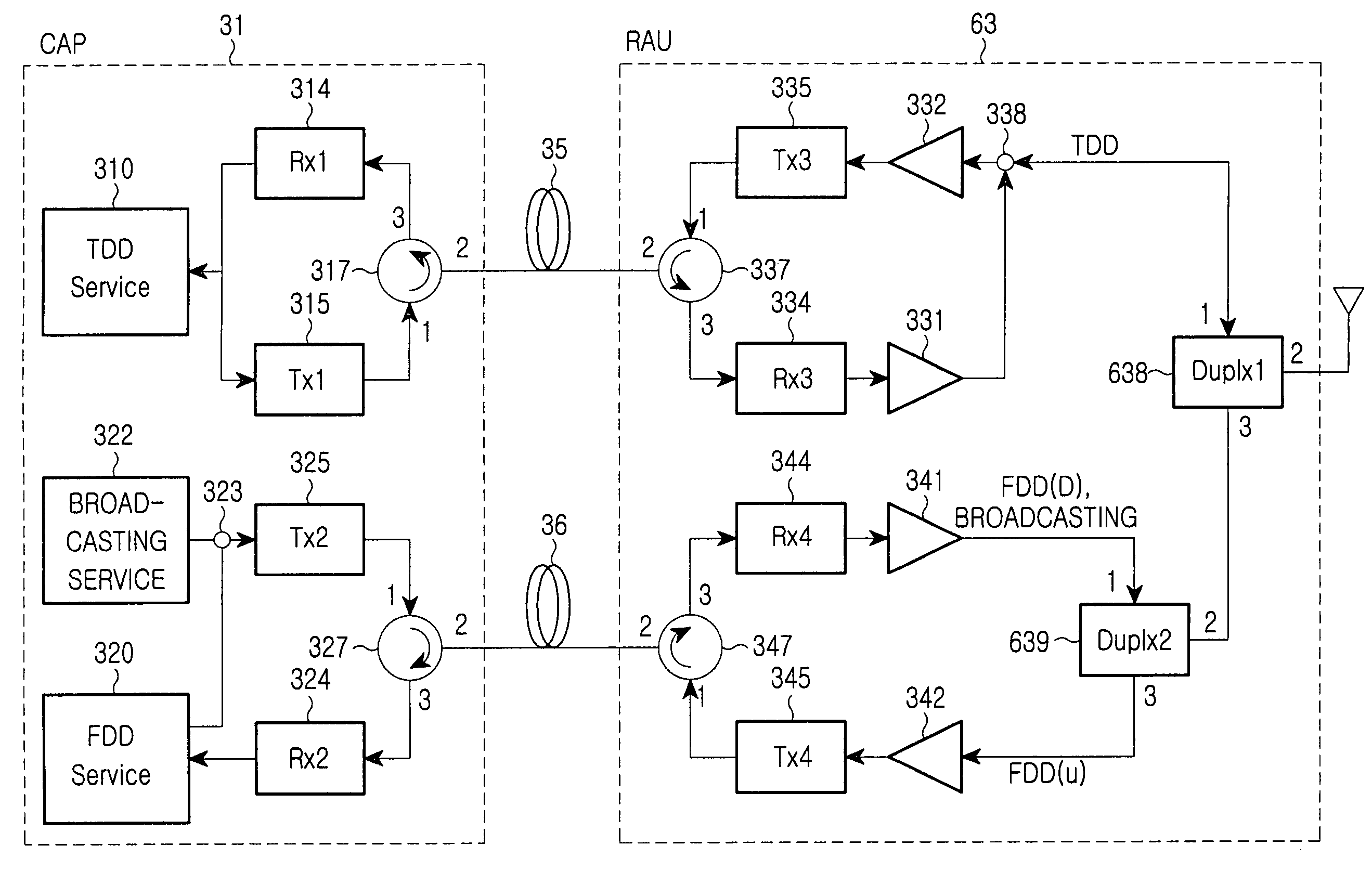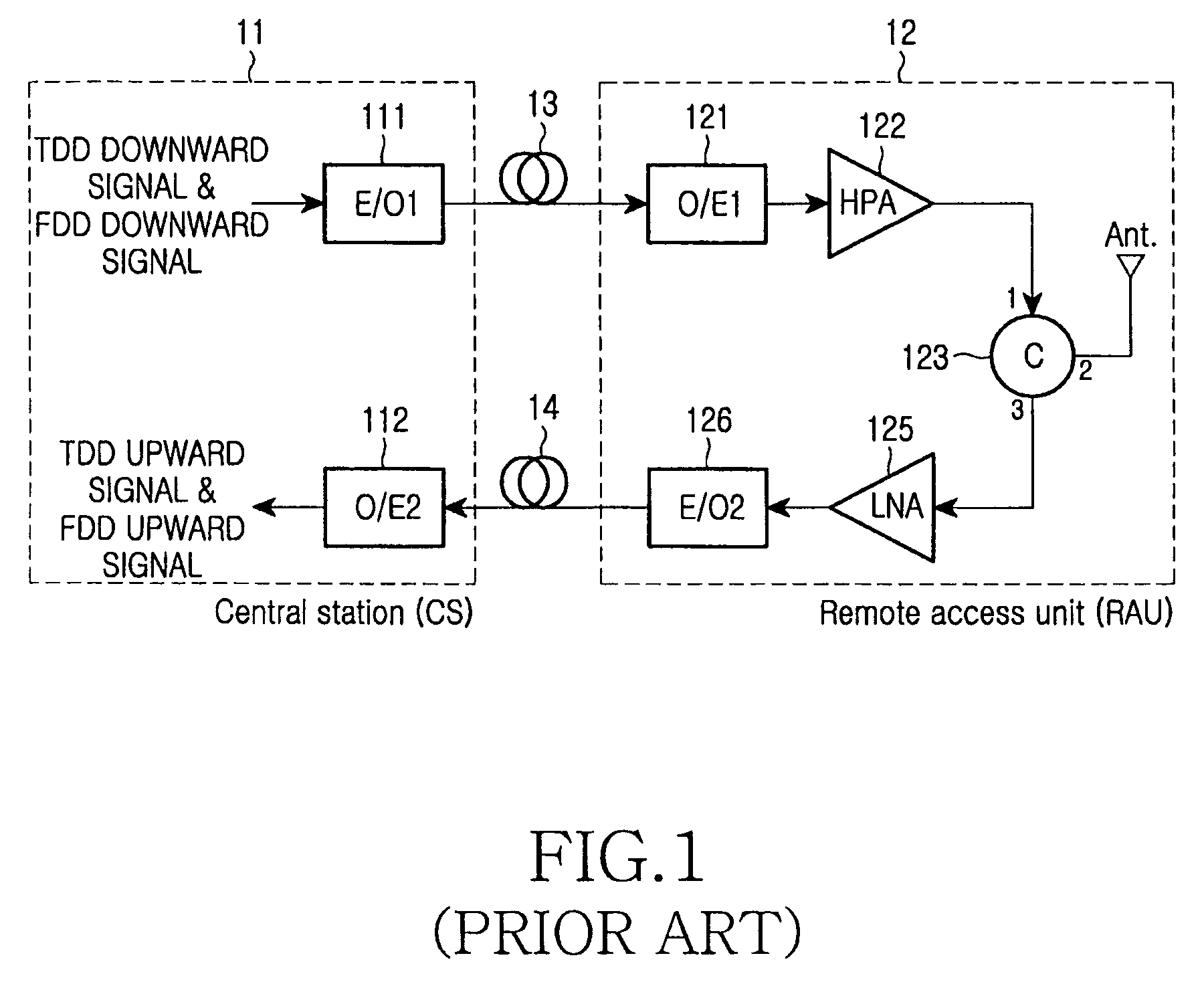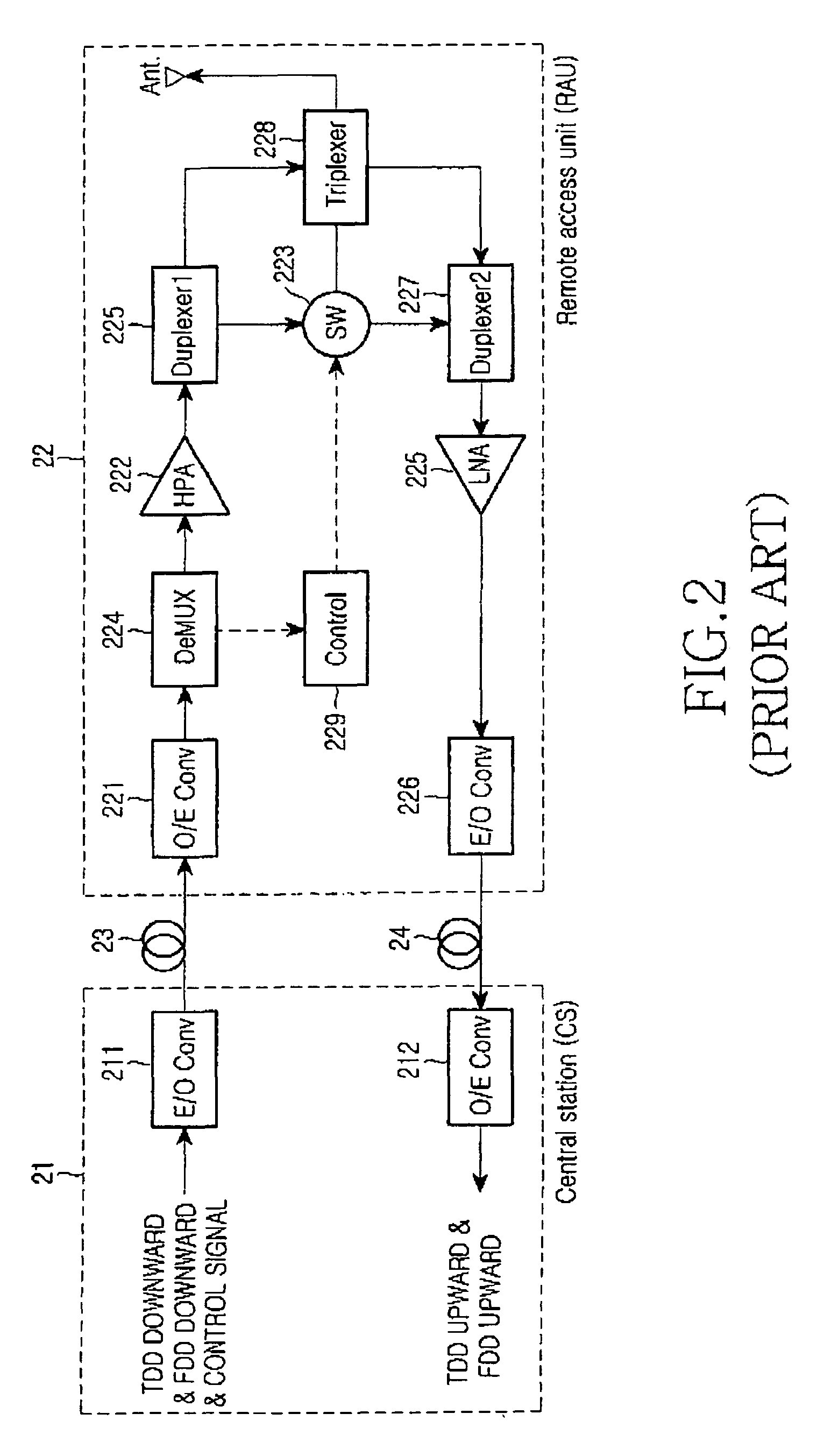ROF link system for supporting various services
a technology of link system and service, applied in the field of radio over fiber link system for supporting various services, can solve the problems of difficult to separate signals, low intensity of uplink signal input through the antenna, and inefficient construction of remote antenna link every type of servi
- Summary
- Abstract
- Description
- Claims
- Application Information
AI Technical Summary
Benefits of technology
Problems solved by technology
Method used
Image
Examples
first embodiment
[0038]The operation of the system according to the present invention will now be described with reference to FIGS. 3, 4A and 4B. First, in the RAU 63 including the RF front-end device, a TDD downward signal transmitted from the CAP 31 is input to the third optical receiver 334 though the third optical circulator 337, is photo-electrically converted, is amplified through the first downward amplifier 331, and is then emitted through the antenna by way of the first duplexer 638. Also, an FDD downward signal and a broadcasting signal are input to the fourth optical receiver 344 through the fourth optical circulator 347, are photo-electrically converted, are amplified through the second downward amplifier 341, and are then emitted through the antenna by way of the second and first duplexers 639 and 638.
[0039]A TDD upward signal, which has been received through the antenna, passes through the first duplexer 638 and first upward amplifier 332, is converted into an optical signal by the thi...
third embodiment
[0051]T he operation of the RAU 33 in the system according to the present invention will now be described with reference to FIGS. 6, 7A and 7C. A TIDD downward signal transmitted from the CAP 31 is input to the third optical receiver 334 through the third optical circulator 337, is photo-electrically converted, is amplified through the first downward amplifier 331, and is then emitted through the first antenna by way of the first duplexer 3389. Also, the FDD downward signal and broadcasting signal are input to the fourth optical receiver 344 through the fourth optical circulator 347, are photo-electrically converted, are amplified through the second downward amplifier 341, and are then separated into the FDD downward signal and broadcasting signal by the diplexer 348. Then, the FDD downward signal are emitted through the second antenna by way of the second duplexer 349 and the and broadcasting signal emitted through the first antenna by way of first duplexer 338.
[0052]A TDD upward s...
fourth embodiment
[0055]According to such a construction, a TDD downward signal and FDD / broadcasting downward signals in the CAP 51 are wavelength-multiplexed by the first CWDM 510, and are then transmitted to the second CWDM 530. Then, the second CWDM 530 demultiplexes the multiplexed signal. Also, TDD and FDD upward signals, which have been output from the third and fourth optical circulators 337 and 347 in the RAU 53, are wavelength-multiplexed by the second CWDM 530, and are then transmitted to the first CWDM 510. Then, the first CWDM 510 demultiplexes the multiplexed signal. As the processing shown in FIG. 8, after de-multiplexing the received signals in CAP 51 and RU 53 are similar to that described with regard to FIG. 6, a detailed description of such processing need not be repeated for one skilled in the art to understand the principles of this fourth embodiment of the invention.
[0056]As described above, the ROF link system for supporting various services according to the present invention pr...
PUM
 Login to View More
Login to View More Abstract
Description
Claims
Application Information
 Login to View More
Login to View More - R&D
- Intellectual Property
- Life Sciences
- Materials
- Tech Scout
- Unparalleled Data Quality
- Higher Quality Content
- 60% Fewer Hallucinations
Browse by: Latest US Patents, China's latest patents, Technical Efficacy Thesaurus, Application Domain, Technology Topic, Popular Technical Reports.
© 2025 PatSnap. All rights reserved.Legal|Privacy policy|Modern Slavery Act Transparency Statement|Sitemap|About US| Contact US: help@patsnap.com



